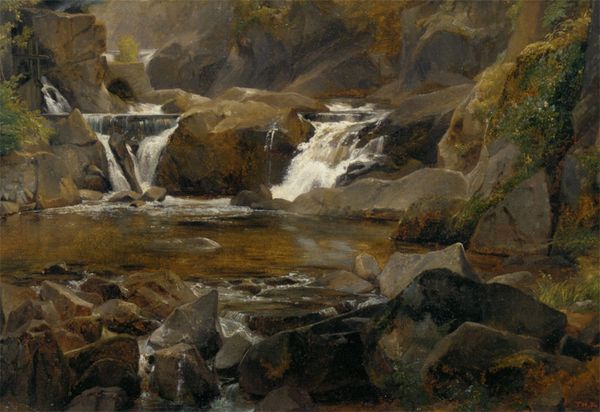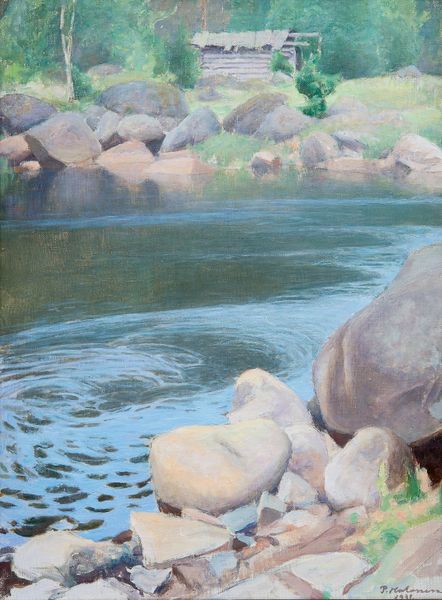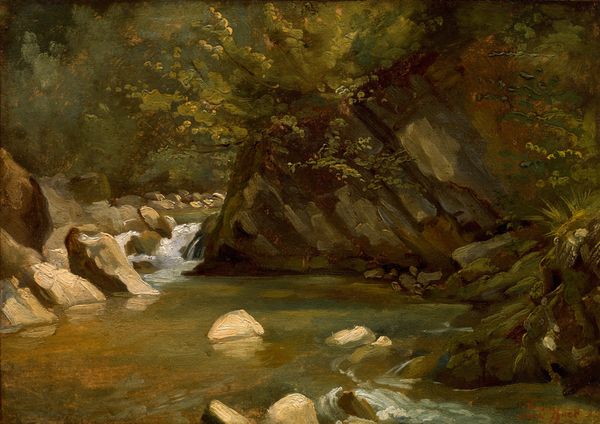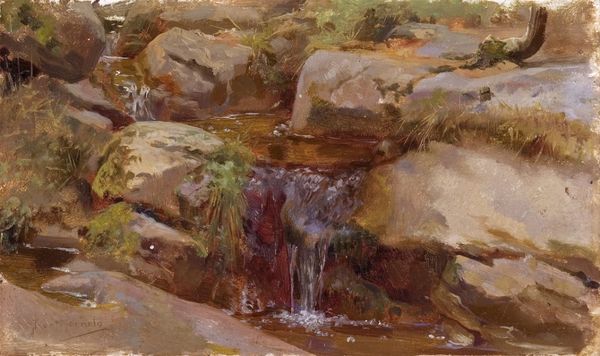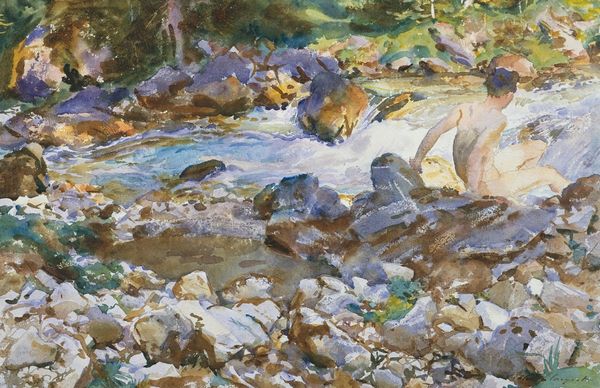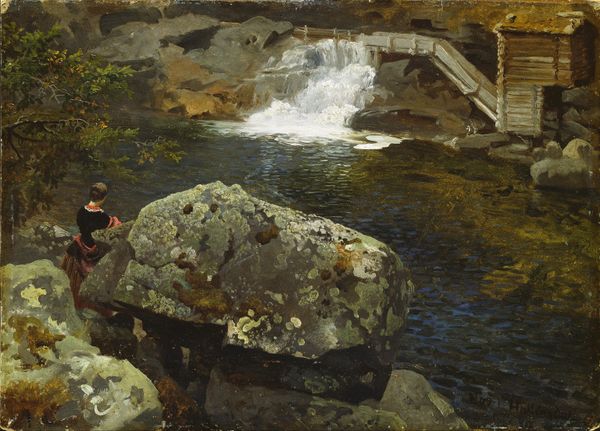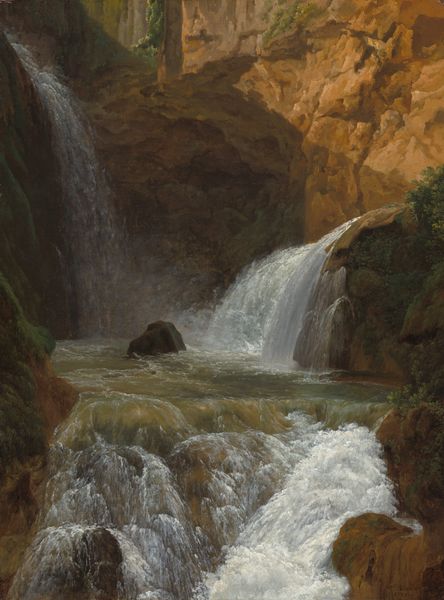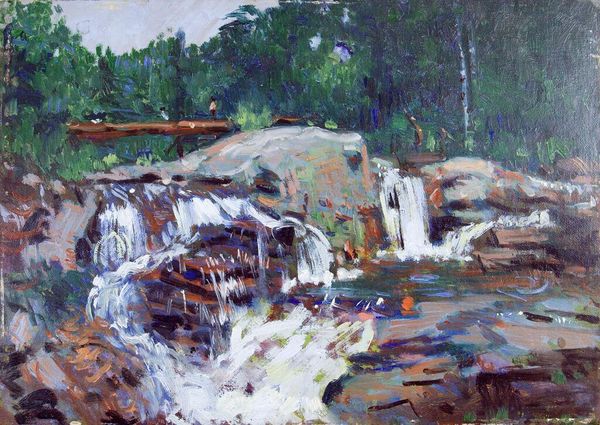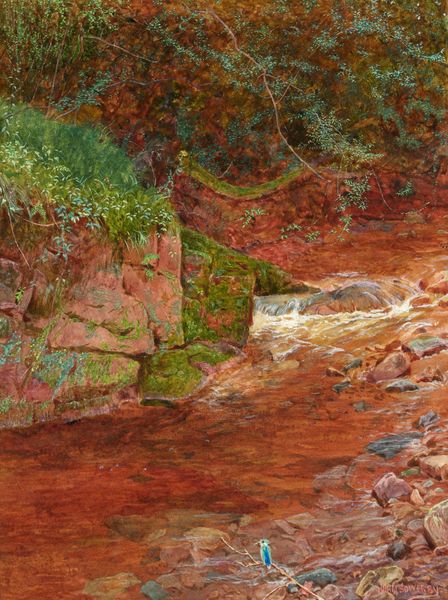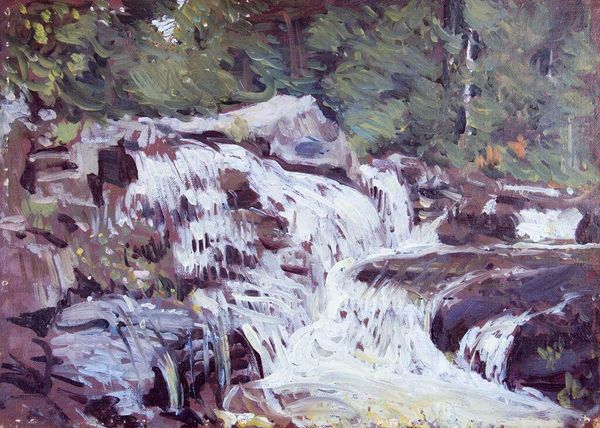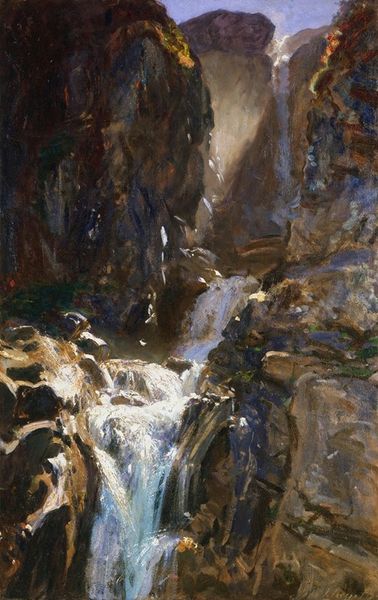
Copyright: Public domain
Curator: Edward Henry Potthast's "The Waterfall," painted in 1908, captures a seemingly simple scene in vibrant oil. Editor: The painting strikes me as unusually bright; the tones of green and yellow create a hazy light that feels very still and contained despite the supposed motion of falling water. Curator: Waterfalls have appeared in art for centuries, holding cultural and psychological weight. Here, the waterfall is framed and made domestic, more of a visual delight than an awesome power. The painting’s accessibility might derive from the way he minimizes the sublime through color. Editor: Sublimity can be expressed even in muted forms. Look how Potthast constructs this scene. Notice how he directs our eye—the strong diagonal of the bank leads to the central cascade, while the lighter colors pull the gaze. This creates depth, not merely depicting a waterfall, but crafting a constructed visual space. Curator: The composition implies the sublime in other ways. The painting recalls traditions of representing baptism and cleansing; its cultural impact has become subdued within this artist’s color scheme, almost a forgotten tradition. Editor: Traditions in painting are always in conversation with the technical facility of the artist. Take note of Potthast’s brushwork; short, broken strokes construct the surfaces. It reminds me how perception is constructed and the scene breaks down into constituent parts. There's no single continuous motion, only the sum of discrete points. Curator: This emphasizes the way that collective memory is broken apart and reformed. Consider the visual fragmentation and its similarity to more recent media. Perhaps Potthast offers a comment on the rapidly changing landscape of culture, offering fractured reflections. Editor: That's fascinating. The artwork offers this beautiful synthesis of light, form, and surface. This is a painting that rewards slow looking. Curator: Indeed. It reminds us to see through familiar images and reconnect with layers of inherited meanings.
Comments
No comments
Be the first to comment and join the conversation on the ultimate creative platform.
